 When I was publishing today’s post, for a second, I thought about the category in which I should place it. People who are familiar with WordPress (a programme for managing content on the blogs) know that whenever you add a new recipe, you need to choose an appropriate category as well. Well, are dumplings made from potato flour, eggs, and curd cheese a dinner or a breakfast? Personally, I can tell you that if you serve them with thick cream, fried bread crumbles, and home-made sour cherry preserve, you’ll make your householders happy regardless of the time of the day :-).
When I was publishing today’s post, for a second, I thought about the category in which I should place it. People who are familiar with WordPress (a programme for managing content on the blogs) know that whenever you add a new recipe, you need to choose an appropriate category as well. Well, are dumplings made from potato flour, eggs, and curd cheese a dinner or a breakfast? Personally, I can tell you that if you serve them with thick cream, fried bread crumbles, and home-made sour cherry preserve, you’ll make your householders happy regardless of the time of the day :-).
* * *
Publikując dla Was dzisiejszy wpis przez chwilę zastanawiałam się do jakiej kategorii zaliczyć ten przepis. Osobom, którym wordpress (program, który służy do zarządzania treścią blogową) jest znany wiedzą, że przy dodaniu nowego przepisu należy przyporządkować odpowiednią kategorię. A zatem czy leniwe pierogi ogłaszamy deserem, obiadem a może śniadaniem? Osobiście odpowiem Wam, że jeżeli podacie je z tłustą śmietaną, podsmażoną bułką tartą i domowymi konfiturami z wiśni to niezależnie od pory dnia, uszczęśliwicie swoich domowników :-)
 Ingredients:
Ingredients:
(recipe for 4 portions)
600 g of full fat curd cheese
approx. 1.5 glass of flour
2 eggs
2 tablespoon of yoghurt (optional)
1 vanilla sugar
served with: fried bread crumbs
sour cream
sour cherry preserve: approx. 3 kg of sour cherries (stoned)
approx. 80 dag / 1 kg of sugar
* * *
Skład:
(przepis na 4 porcje)
600 g tłustego twarogu
ok. 1,5 szklanki mąki
2 jajka
2 łyżki jogurtu (opcjonalnie)
1 cukier waniliowy
do podania: podsmażona bułka tarta
kwaśna śmietana
konfitury z wiśni:ok. 3 kg wiśni (wydrylowanych)
ok. 80 dag / 1kg cukru
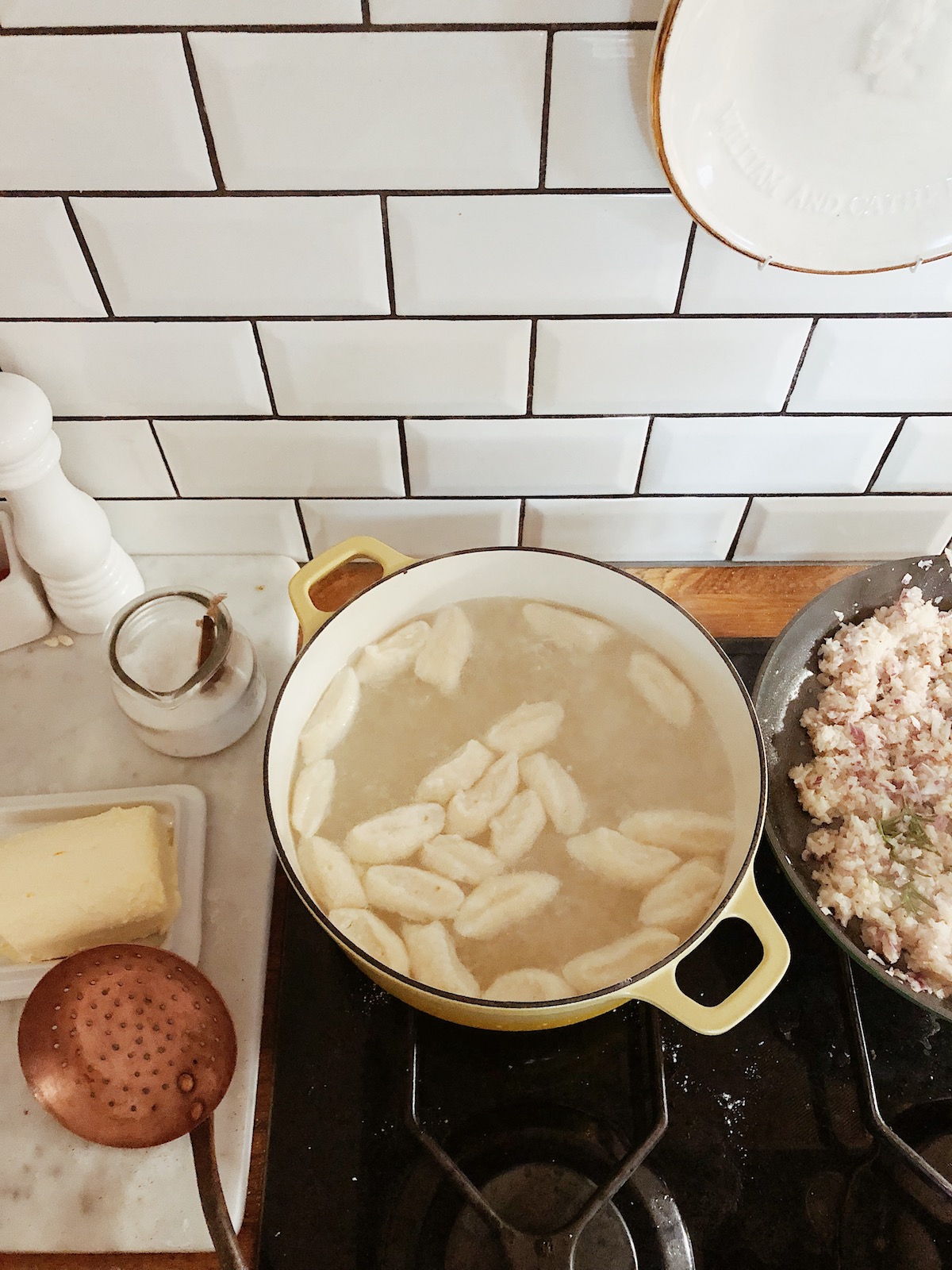
Directions:
1. To prepare dumplings made from potato flour, eggs, and curd cheese: knead the curd cheese with a fork until smooth. Add yoghurt, eggs, sugar, and sifted flour. Knead until smooth (if the dough is still sticking to your hands, sprinkle your fingers with flour, but avoid adding more flour to the dough itself – the dumplings might be hard as a result). Divide the dough into a few smaller parts. Form a small roll with each of them and cut the rolls into 2-centimetre pieces. Cook the dumplings in boiling water until they flow out. Serve with sour cream, slightly fried bread crumbs, and sour cherry preserve.
2. To prepare sour cherry preserve: cover sour cherries with sugar and leave them for approx. 30 minutes until they release juices. Place everything in a pot with thick bottom, boil some water, and cook for 15 minutes. Place the hot sour cherries in scalded jars, close them, and place them upside down.
* * *
A oto jak to zrobić:
1. Aby przygotować leniwe: twaróg ugniatamy widelcem na gładką masę, następnie dodajemy jogurt, jajka, cukier i przesianą mąkę. Całość zagniatamy do uzyskania jednolitej masy (jeżeli masa nadal się przykleja do rąk, to posypmy dłonie mąką, nie dodajemy więcej mąki do samego ciasta, bo w efekcie kluski mogą wyjść twarde). Gotowe ciasto dzielimy na kilka mniejszych części, z każdej formujemy wałek i kroimy na kawałki w wielkości 2 cm. Tak przygotowane kluski gotujemy we wrzącej wodzie do momentu, aż wypłyną. Podajemy z kwaśną śmietaną, podsmażoną bułką tartą i konfiturami z wiśni.
2. Aby przygotować konfiturę z wiśni: wydrylowane wiśnie zasypujemy cukrem i odstawiamy na min. 30 minut, aż puszczą sok. Całość przekładamy do garnka z grubym dnem, doprowadzamy do wrzenia i gotujemy przez 15 minut. Gorące wiśnie wkładamy do wyparzonych słoików, zamykamy i odstawiamy dnem do góry.
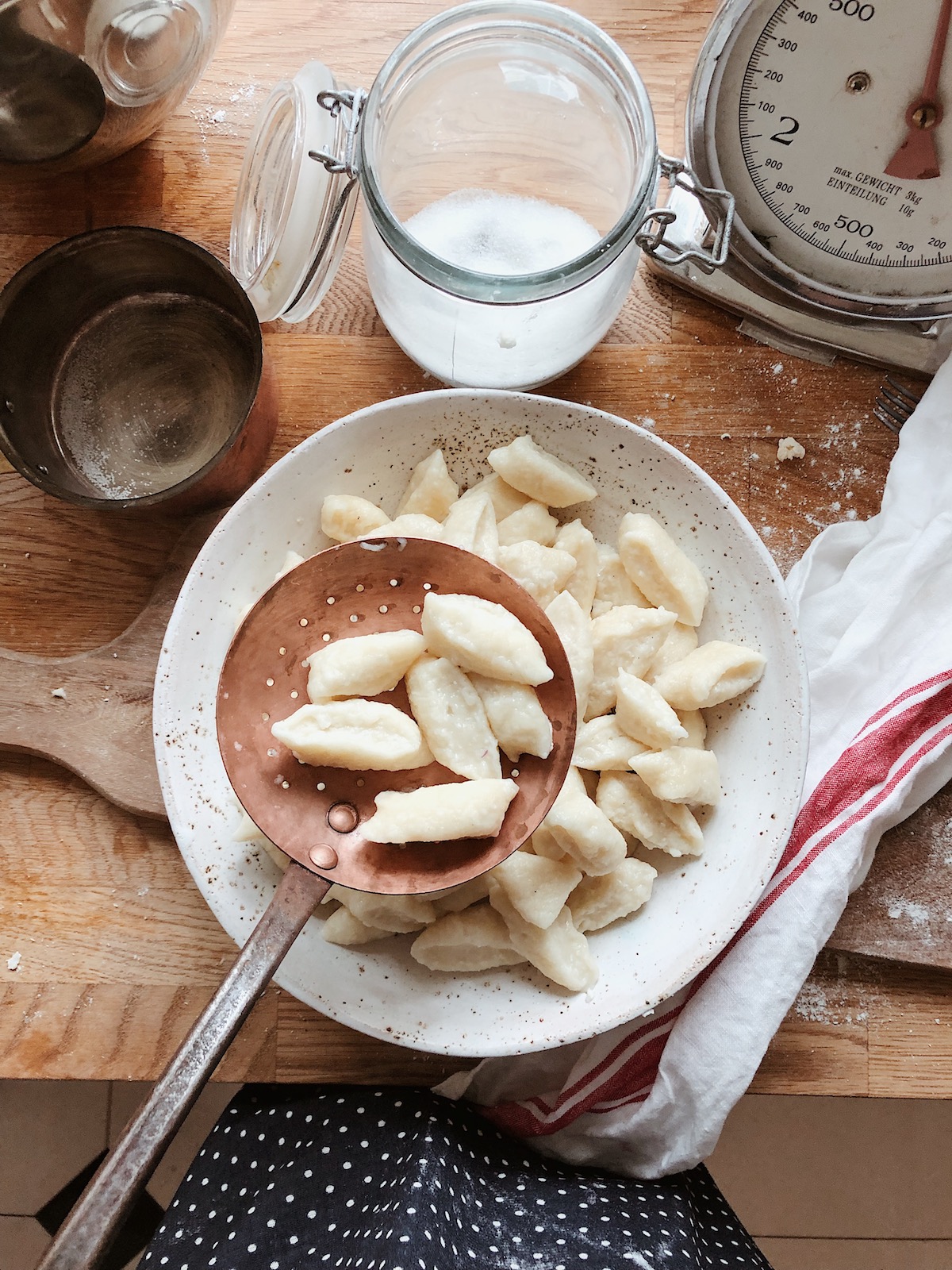








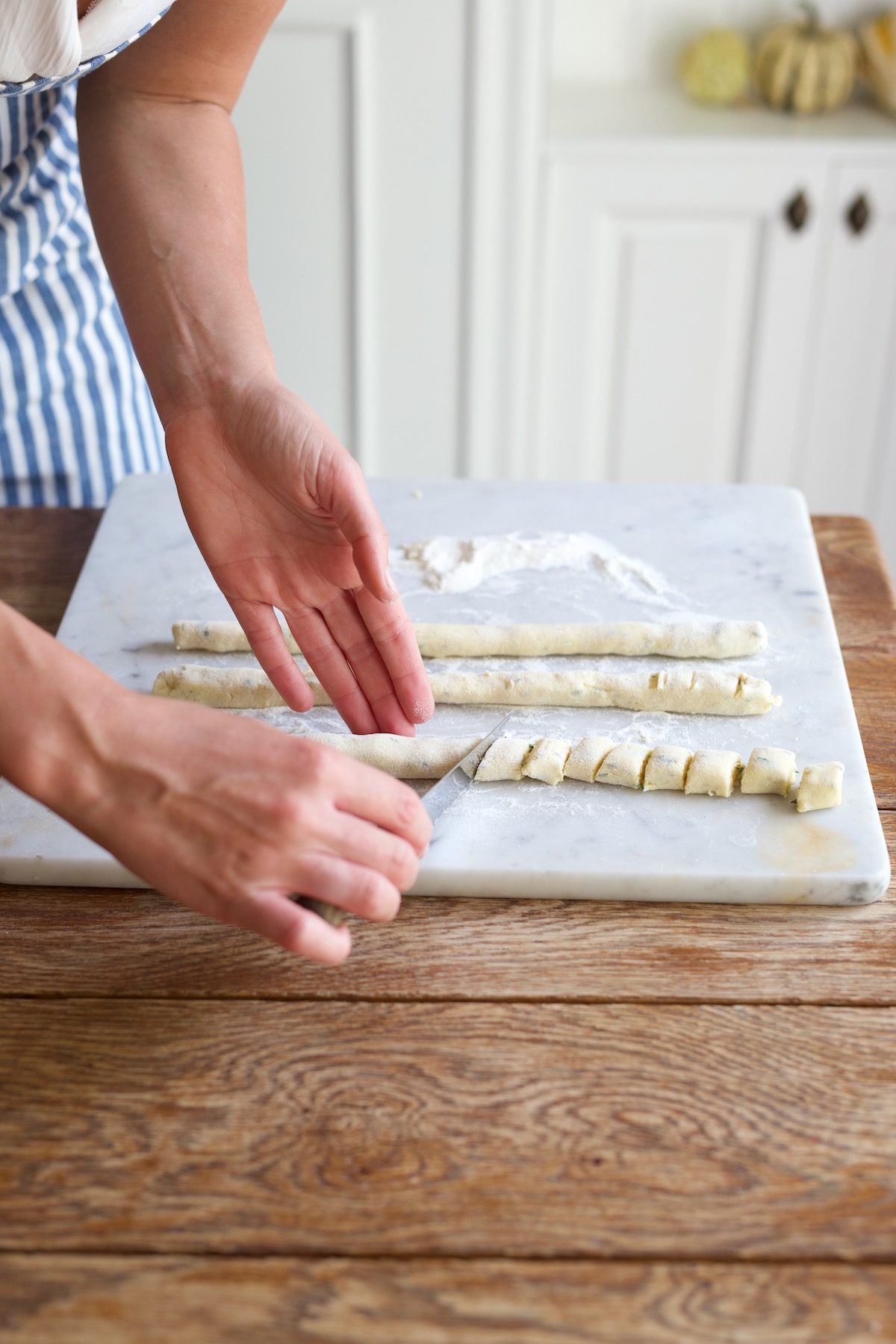
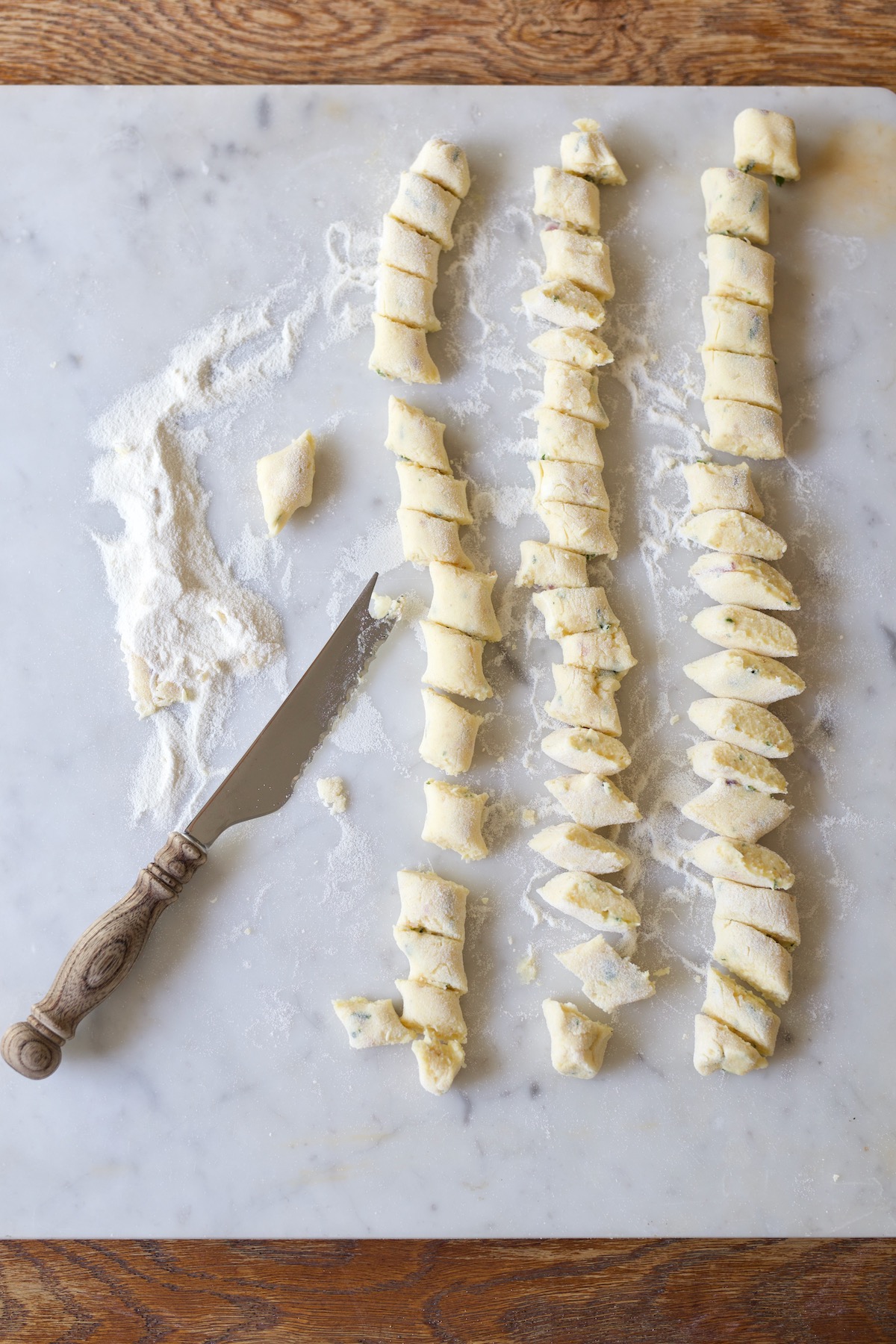


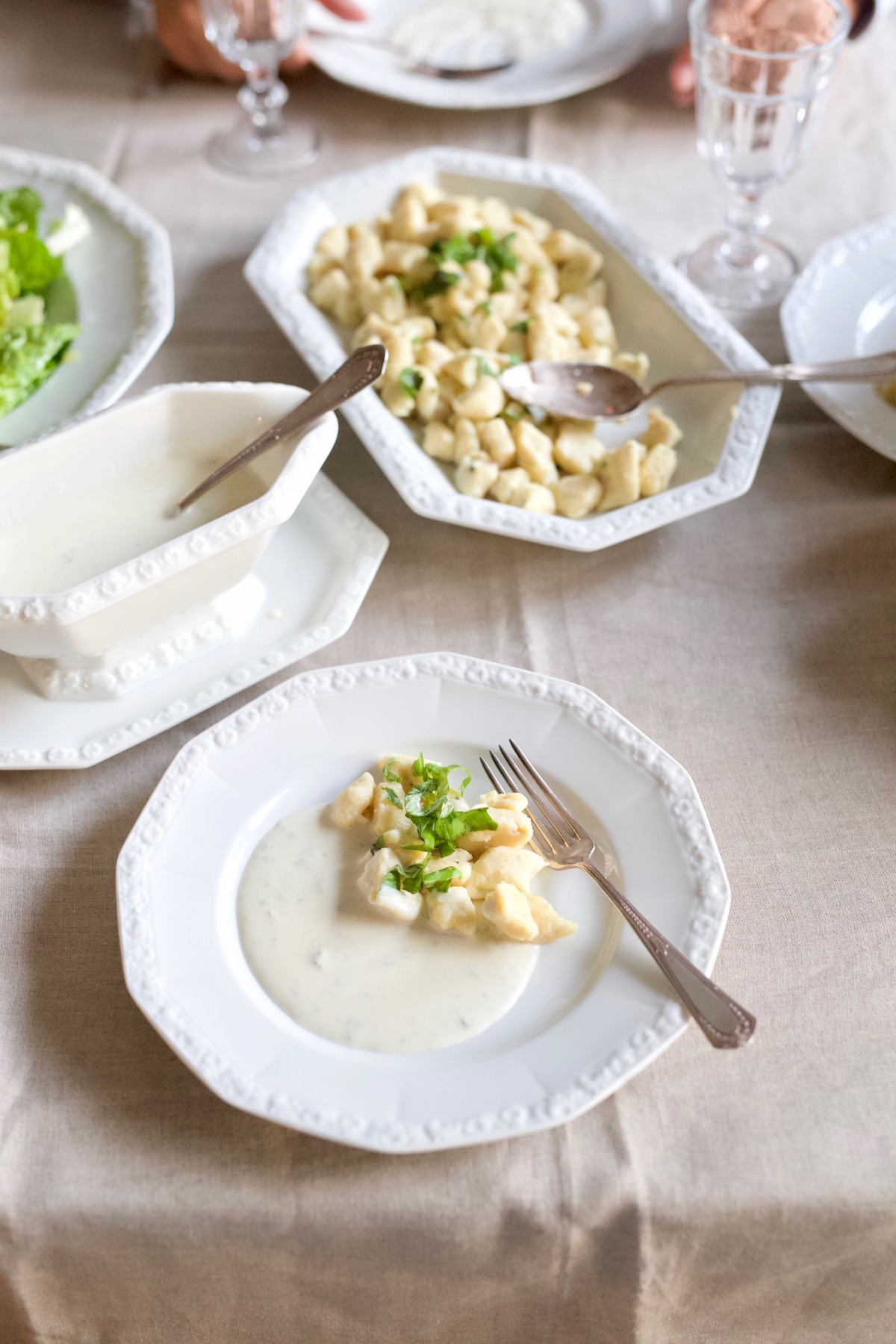 Ugotowane kopytka podajemy z gorącym sosem z gorgonzoli i posiekanymi liśćmi bazylii.
Ugotowane kopytka podajemy z gorącym sosem z gorgonzoli i posiekanymi liśćmi bazylii.